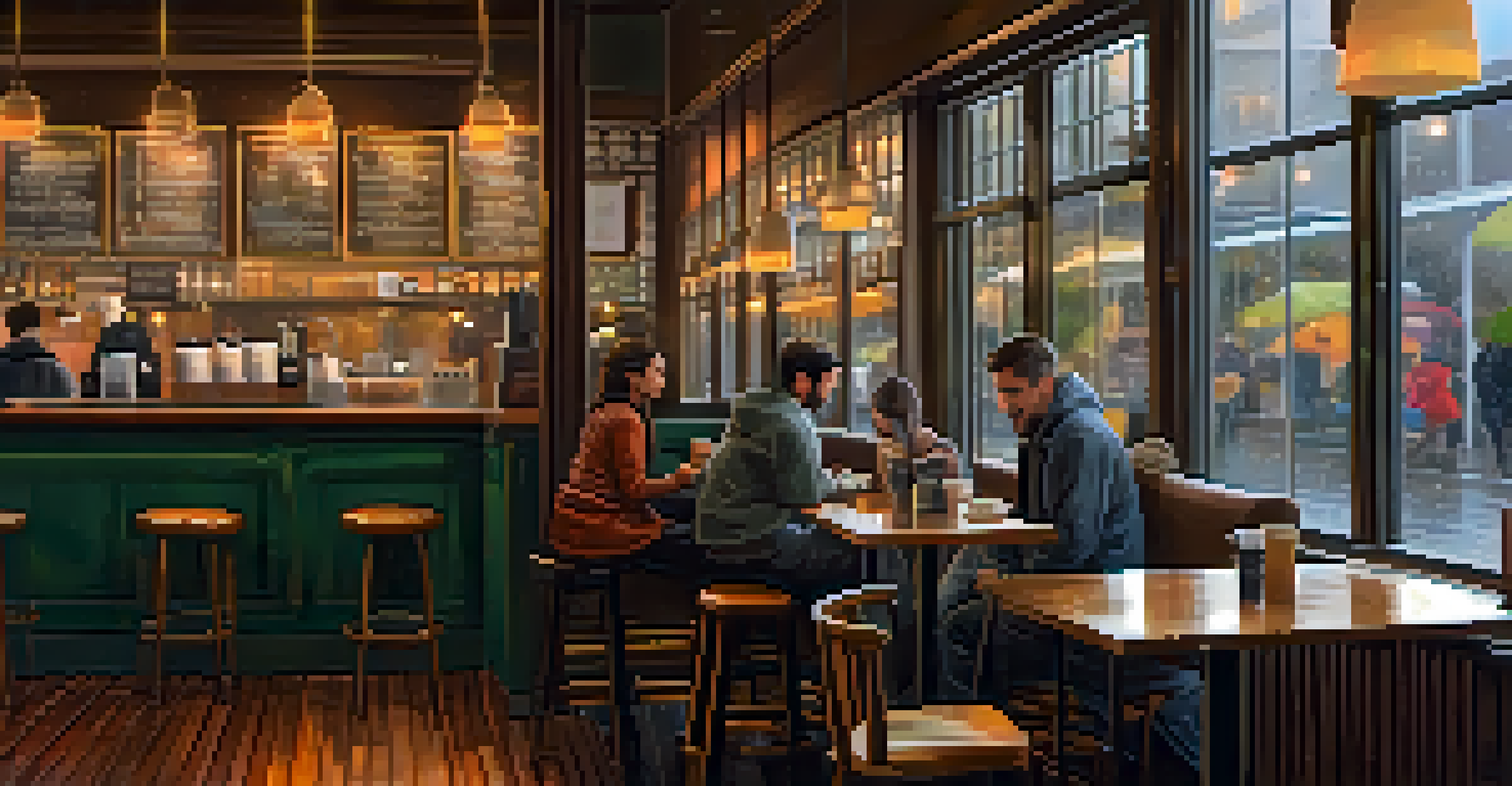Music Cues and Their Importance in Film Storytelling Techniques

What Are Music Cues and Why Do They Matter?
Music cues are specific pieces of music or sound that accompany scenes in films, serving to evoke emotions or signal changes. They can range from background scores to distinct themes that represent characters or situations. Without these cues, a film's emotional impact can be significantly diminished, leaving audiences less engaged.
Music can change the world because it can change people.
Consider the iconic theme from 'Jaws'—the two-note motif instantly signals danger and heightens tension. This is a prime example of how a well-placed music cue can transform a scene and guide audience reactions. Music cues not only enhance the storytelling but also help to establish a film's tone and atmosphere.
In essence, music cues act like an emotional GPS for the audience, helping them navigate the narrative landscape. They signal when to feel joy, fear, or sadness, making the viewing experience more immersive and memorable.
The Emotional Impact of Music Cues
Music has a unique ability to trigger emotions, and filmmakers leverage this power through music cues. A heartwarming score can bring tears to your eyes, while a dissonant note can create unease. This emotional manipulation is a critical tool in storytelling, allowing filmmakers to convey feelings that might be difficult to express through dialogue alone.

For instance, think of scenes in romantic films where the music swells during a climactic moment between characters. The right cue makes viewers not just witness the romance but feel it. This connection deepens the emotional experience and fosters a bond between the audience and the characters.
Music Cues Enhance Emotional Impact
Music cues evoke emotions and deepen audience engagement, making the viewing experience more immersive.
In many ways, music cues serve as emotional shorthand, conveying complex feelings in just a few notes. This efficiency is what makes them indispensable in film, as they enhance storytelling without overwhelming the narrative.
Creating Tension and Suspense with Music Cues
One of the most effective uses of music cues is in building tension and suspense. A slow, creeping score can heighten anticipation, making viewers sit on the edge of their seats. The suspense is often magnified through gradual changes in volume and tempo, leading up to a shocking moment.
The music is the most important part of the film. It's the soul of the film.
Take the classic horror film 'Psycho' for example. The shrieking violins during the shower scene are unforgettable, instantly conjuring fear. This is a masterclass in how music can elevate a scene, making it not just a visual experience, but a visceral one as well.
Furthermore, the absence of music can be just as powerful. Silence can create a sense of dread, leaving viewers to brace themselves for what might happen next. This interplay between music and silence is crucial in crafting effective suspense in film.
Character Themes: Music as a Storytelling Device
Character themes are specific musical motifs that represent individuals or groups within a film. These themes can evolve alongside the character, reflecting their journey and growth throughout the story. By associating certain music with a character, filmmakers create a deeper connection between the audience and the narrative.
Think about the 'Imperial March' associated with Darth Vader in 'Star Wars.' Every time that music plays, viewers immediately recognize the presence of the dark side, reinforcing Vader’s character traits. This technique not only enhances storytelling but also helps audiences remember key characters.
Tension and Suspense Through Sound
Filmmakers use music cues to build tension and suspense, amplifying emotions and creating memorable scenes.
When done well, character themes add layers to the storytelling, allowing for a richer viewing experience. They serve as a cue for the audience, reminding them of past events associated with that character and heightening emotional engagement.
Cultural Significance of Music Cues in Film
Music cues in film often draw on cultural references, adding layers of meaning and resonance to the story. These cues can evoke specific emotions tied to cultural experiences, such as nostalgia or collective memory. This cultural significance helps to ground the film in a particular time or place, enriching the narrative.
For example, using traditional folk music in a film set in a rural community can evoke a sense of authenticity and connection to the characters’ backgrounds. This not only enhances the storytelling but also deepens the audience's investment in the narrative.
Ultimately, cultural music cues can resonate on a personal level, making the film feel more relatable and impactful. They connect the audience to the narrative in ways that transcend language, emphasizing the universal nature of storytelling.
The Role of Music in Setting the Scene
Music cues also play a pivotal role in setting the scene and establishing the film's environment. From the bustling streets of a city to a tranquil forest, the right music can transport viewers and immerse them in the film's world. This spatial awareness enhances the storytelling by making the setting feel more alive and dynamic.
Consider the use of upbeat jazz in a film depicting a lively urban scene. The rhythm and tempo of the music can reflect the energy of the city, making viewers feel as if they are part of that environment. Conversely, a slow, somber score can evoke feelings of isolation in a desolate landscape.
Cultural Significance in Storytelling
Cultural music cues enrich narratives by connecting audiences to the story through shared experiences and emotions.
By using music cues to set the scene, filmmakers create a rich backdrop that supports the narrative and enhances the audience's emotional response. Music becomes an essential element of the world-building process, making the film's setting an integral part of the story.
Conclusion: The Lasting Impact of Music Cues
In conclusion, music cues are a powerful storytelling technique that can significantly enhance a film's narrative. They evoke emotions, create tension, and deepen audience engagement, making the viewing experience more memorable. The careful selection and placement of music can transform a film from a simple story into an emotional journey.
As viewers, we often don’t realize how much music influences our reactions until a powerful cue hits us. These moments linger long after the credits roll, reminding us of the emotions we felt during the film. This impact is what makes music cues an essential aspect of storytelling.

Ultimately, understanding the importance of music cues in film can enrich our appreciation of cinema. Next time you watch a movie, pay attention to the music—it just might change the way you experience the story.